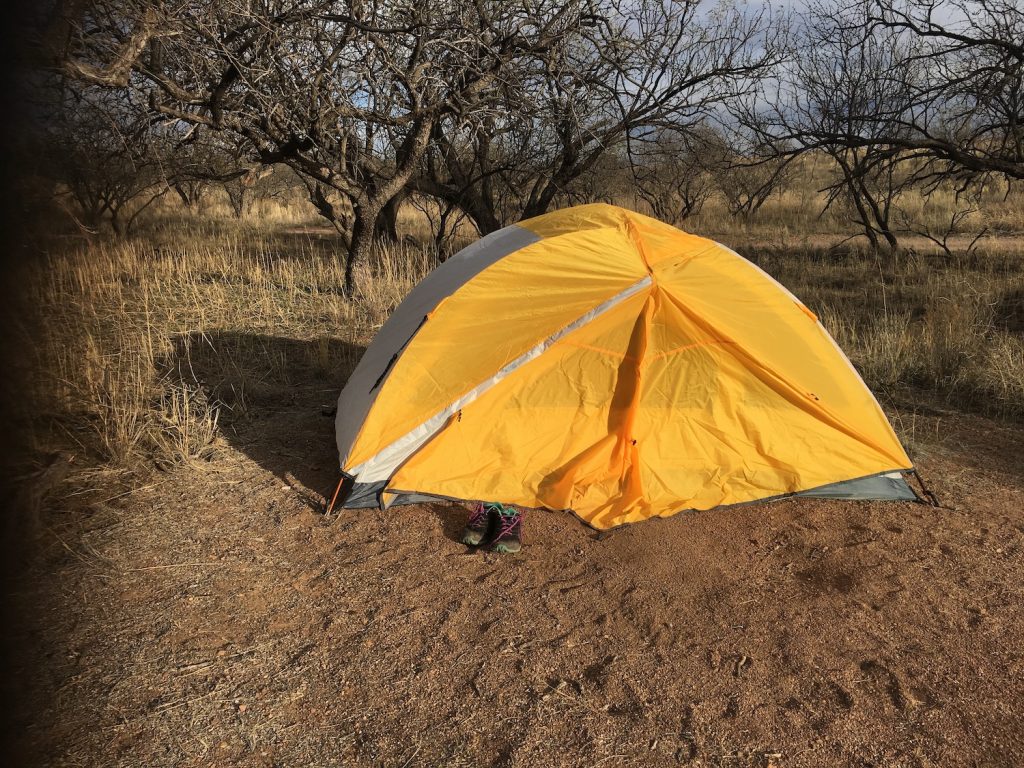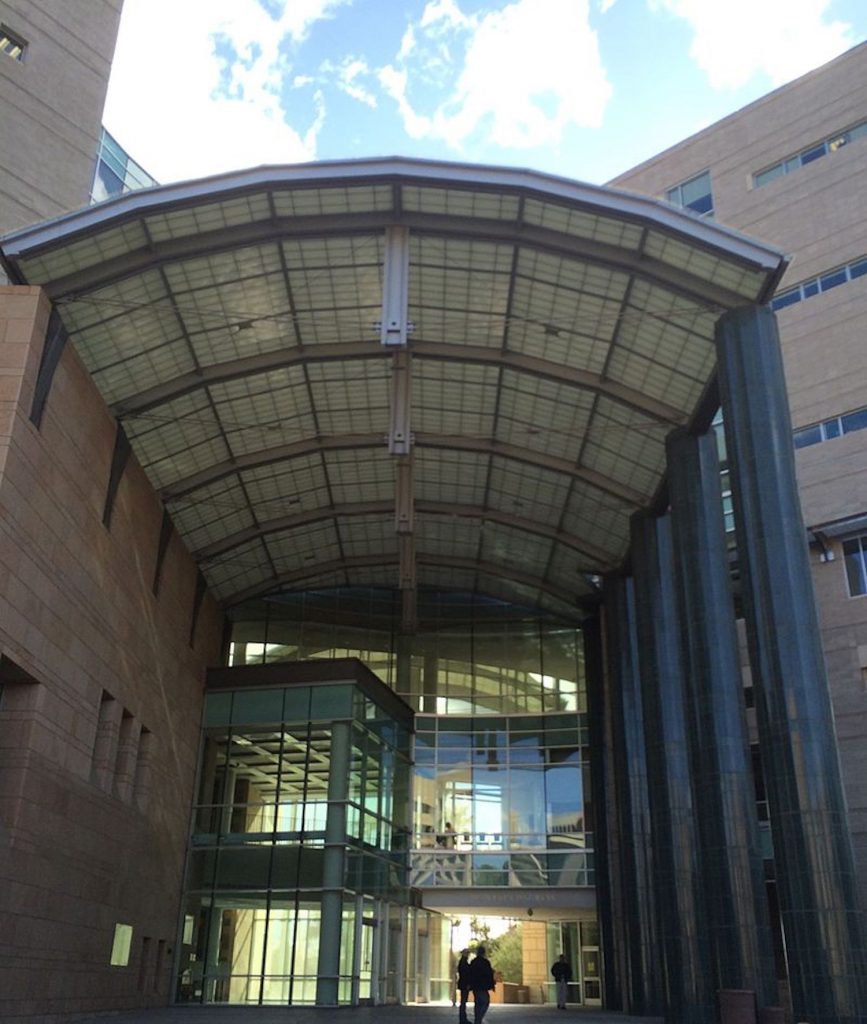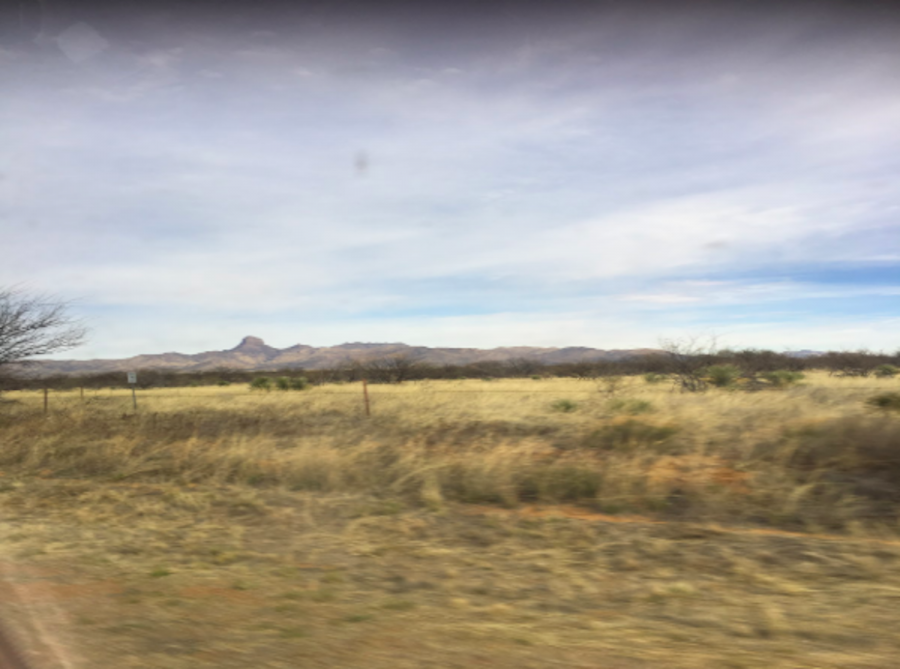It was mid-afternoon by the time the ten of us piled out of big Ford trucks and into the Sonoran Desert. We had arrived in the tiny town of Arivaca, Arizona, eleven miles north of the US Mexico border. After a tour of our camp, I looked for a place to set up my tent. It was March 2018, and I and seven other volunteers had just begun a week with the humanitarian aid organization No More Deaths. Since 2004, the organization has maintained a year-round humanitarian presence in the Sonoran desert while also providing legal clinic services in Tucson, Arizona documenting immigration abuses and providing migrants recently deported to northern Mexico opportunities to call their families and recover belongings that were lost or stolen during their detention. I joined the organization in one of their most straightforward objectives — leaving water in the desert.
I shrugged my backpack onto the ground and a puff of dust rose from the earth. Staring at the bright yellow tarp laid out in front of me, I realized two things. The first was that the spot I had chosen for my tent was dangerously close to a prickly pear cactus. The second thing I realized was that I didn’t know how to put up a tent. I stared at the plastic mess and took a deep breath, thinking I’m in over my head.
A more experienced volunteer popped up over my shoulder.
“Need some help?”
“In a big way,” I said.
Five minutes later I was staring at what would be my bright yellow home for the coming week.
“Kind of close to that prickly pear,” she said, observing our handiwork, but I was no longer worried. This was partially because I had not yet experienced the agony that is stumbling over a prickly pear in the middle of the night. Mainly, though, I was grateful for her kindness. From experienced wilderness medics to ideological college dropouts (I’ll let you guess which one I was) the volunteers looked out for each other that week, dividing the labor at the campsite and providing physical and emotional support during long hikes. Though we knew the water and food we left along migrant footpaths might be destroyed by Border Patrol, the supplies, and the wilderness medics could also save the life of someone crossing the border.

Fast forward to last Friday, when President Donald Trump declared a national emergency on the southern border of the United States. As 16 states mount legal challenges to the decision, four humanitarian aid workers from No More Deaths await sentencing after being found guilty in federal court of leaving food and fresh water for migrants in the Cabeza Prieta National Wildlife Refuge. Four additional No More Deaths volunteers awaiting trial had their charges dropped this week. While the dismissals this week are encouraging, the fates of the volunteers found guilty in January, and the fate of another No More Deaths volunteer, Scott Warren, still hang in the balance. The fact that these individuals, collectively referred to as the #Cabeza9, were charged at all is indicative of a disturbing new trend in the ongoing militarization of northern Mexico and southern Arizona: criminalizing humanitarian aid workers.
As a child, I grew up understanding migration in terms of an individual crossing an imaginary line. Since my hometown in Tennessee lies more than one hundred miles away from an international border, Border Patrol doesn’t have legal jurisdiction in the city. I didn’t grow up crossing checkpoints on my way to the grocery store. My family is mostly made up of US citizens, two generations or more removed from the bureaucracy of naturalization. The mechanisms of immigration were invisible to me, as they are to many others. I didn’t do a deep dive into immigration policy as a kid, but if I had tried to find objective information about Latinx immigrants, the US media wouldn’t have been much help; negative portrayals of Latinx immigrants in the media play a large role in Americans view of immigrant issues.
The White House’s rhetoric on immigration relies on this ignorance to push the message that illegal immigration, as well as mass migration through official ports of entry, should be blamed on the migrants themselves.
“Does the administration take responsibility for a parent taking a child on a trek through Mexico to get to this country?” White House spokesman Hogan Gidley asked in a December 2017 press conference.
A reporter had questioned Gidley about the death of the seven-year-old Guatemalan girl Jakelin Caal, who died in December 2017 in Immigration and Customs Enforcement (ICE) custody of exhaustion, dehydration, and shock.
“No,” Gidley said simply.
Despite the official position of the Trump administration, the depth and breadth of the United States’ responsibility for Jakelin’s death is undeniable: for decades Latin Americans migrate people have migrated to the United States because of the devastating effect US imperialist foreign policies have had on the region. Jakelin Caal, for example, was Q’eqci’-Maya. The history of the Q’eqci, which Greg Grandin and Elizabeth Oglesby explore in depth in The Nation, illustrates how United States imperialism is inextricably tied to migration patterns, but the White House consistently denies this responsibility, using racist dog whistles and individualistic rhetoric. Both President Trump and President Obama urged migrants to come to the United States legally, framing the choice as a moral decision that faces each and every migrant.
“We want people to come in. But they’ve got to come in like you — legally,” President Trump said at a campaign rally in 2016, gesturing to a man in a shirt that read “Legal Immigrant for Trump”.
Of course, many people immigrate to this country through legal channels, but, depending on where you you’re from, legal immigration into the United State can be next to impossible. In Mexico, 1,323,978 people were on a waitlist for a US Visa a year before President Trump took office. The average wait time for a visa was 18 years. If someone wants to claim asylum, a tremendous backlog means that person might have to wait days or weeks for their case to be processed. In 2017, Attorney General Jeff Sessions made it more difficult for victims of gang violence or domestic abuse quality for asylum in the country. Lots of folks are left with one realistic option: the desert.
It was after about an hour of relatively easy hiking on our third day with No More Deaths that I encountered a backpack discarded under a tree.
“Look at this!” a volunteer shouted.
More backpacks. A pair of shoes, a blue toothbrush and a tube of Crest toothpaste. Half emptied water jugs, identical to the ones we were carrying, were scattered around the scene, blue tops lying next to them. Not a person was in sight.
“Did people get picked up here?” I asked the volunteer leader.
“It’s hard to say,” she said slowly, looking around. “Sometimes migrants just decide to leave all their stuff to travel lighter.”
The other, unspoken possibility was that sometimes people get picked up by ICE.
You didn’t always have to cross the Sonoran Desert if you wanted to get into the United States without waiting for a visa or claiming asylum. In response to the increase in migration after the implementation of the North American Free Trade Agreement (NAFTA) in the 1990s, the Border Patrol adopted a policy known as “Prevention through Deterrence”. Urban sites of illegal migration were militarized to force migrants through harsh, remote terrain. The US predicted that the inevitable increase in migrant fatalities would deter others from making the journey, but immigration north showed no signs of stopping. But they were wrong. From 1998 to 2014, more than 7000 migrants lost their lives in the deserts surrounding of the US Mexico border. In 2004, No More Deaths was founded to respond to the crisis of death on the US Mexico border and to advocate for immigration reform that rejects the brutality of “Prevention through Deterrence” by addressing “environmental, economic and trade inequalities” as root causes of mass migration.

After returning to Tucson, the other volunteers and I sprawled across the Volunteer House sofas, sunburned and freshly showered. We were each handed a packet of papers titled Operation Streamline containing over 100 charges and sentences that migrants had been given after being picked up by ICE and tried before a judge en masse.
Unauthorized entry.
Unauthorized re-entry.
30 days, 60 days, 6 months.
Unauthorized entry.
Unauthorized re-entry.
30 days, 60 days, 6 months.
Operation Streamline is a Bush-era zero-tolerance policy mandating every person caught crossing the border illegally in certain areas is prosecuted through the federal criminal justice system — a policy that remained unchanged during the Obama administration.
As we agitate for remaining charges against the #Cabeza9 to be dropped, we must remember their criminalization is tied to the criminalization of migrants on display in policies like Operation Streamline. From 2005-2012, the government spent an estimated $5.5 billion dollars incarcerating undocumented immigrants for unauthorized entry and reentry, a stark reminder that the criminalization of migrants is a lucrative part of the United States’ hugely profitable prison industrial complex. Trump’s national emergency obscures true crises of our time, like mass incarceration in the United States, and like climate change, which, as Kate Aranoff points out in The Intercept, is expected to cause the largest mass migration in human history. The struggle for the decriminalization of humanitarian aid is a part of the struggle to ensure dignity and justice for those that are traveling across international borders and against the imperialist policies of the United States in Latin America and beyond. We should fight for the #Cabeza9, and we should fight for all those oppressed by the criminalization and militarization of the US Mexico border.
Radical, grassroots humanitarian aid organizations like No More Deaths deserve our support now more than ever. One way to show your support for No More Deaths is to sign their letters to the US Attorney’s office and land managers in the Sonoran desert asking for humanitarian access to the Cabeza Prieta National Wildlife Refuge and the dismissal of the remaining #Cabeza9 charges by going here. To contribute to a fundraiser for the No More Deaths defendants currently awaiting sentencing, click here.

